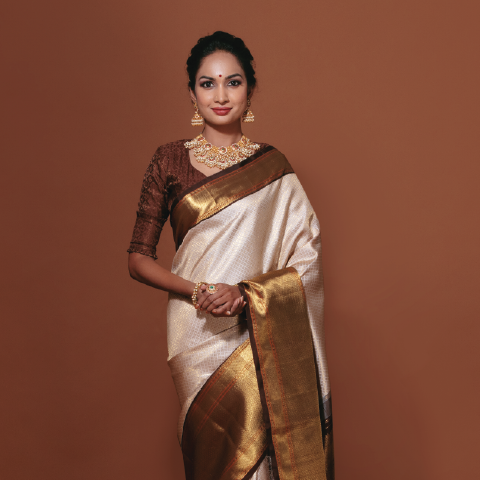Woven with big dreams and enthralling narratives, a traditional Tant saree is synonymous with one of Bengal's finest and oldest weaving technique, wherein a medley of Mughal and Hindu patronage along with a Bengali sense of design gave it a unique identity. The word 'Tant' refers to the handlooms used to weave yards and yards of awe-inspiring creations and dates back to the 15th century, in the Nadia district of West Bengal. Tantshilpa or the art of weaving of handloom sarees ranks second as an economic and industrial activity that provides livelihood to the weaving community across Bangladesh and the Indian states of West Bengal, Tripura and Assam. Through this week's blog, we will be exploring more of this in-depth about this preferred everyday cotton drape.

1. Fulia and Shantipur: Soft and fine-textured, with vibrant colours and large, intricately woven motifs.
2. Dhaniakhali: Pastel shades with minimal motifs and mostly featuring striped patterns.
3. Begampur: Light-weight and translucent weaves in deep, bright colours.
4. Atpur: Coarser weaves known for the production of everyday wear sarees and dhotis.

The distinct hallmark of a Tant saree is the use of locally procured Bengal cotton, whose fine handspun yarn gives the saree its soft and feather-like feel. The process that goes behind bringing this weave to life starts with washing and sun-drying the yarn to remove any impurities or chemicals. It is then bleached, dyed and starched before being wound on bamboo drums for weaving. The artisans then hand draw the designs and transcribe it onto soft cardboards which are then fit into the loom, taking almost 12 hours to 1 week to complete based on the complexity of the designs. Characterised by a big 4-inch border and decorative pallu, some favourite motifs of this weave include Bhomra (bumblebee), Tabij (amulet), Chandmala (garland of moons), Ansh (fish scales), Benki (spiral) and Kalka (paisley).
Inspired by India's diverse traditions and cultures, we seek is to bring forth the country's handloom heritage to the world, through the finest fabrics from across the land and the magical hands that work the loom, such as the breezy and beautiful Bengal cotton sarees.






